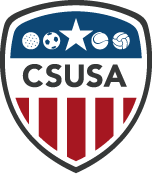Can I take a gap year before I start College?

The simple answer…it depends!
(on which university, which division and your academic path so far)
The NCAA, NAIA and NJCAA are the major governing bodies of College Sports. Regardless of whether you are a soccer player, golfer, tennis player or any other sport, you must be aware of the many rules that determine whether athletes are eligible to compete and/or get scholarships for university sports teams.
Each of the divisions has different rules, but here is a very generalized review, as of November 2018 (Rules change regularly)
NCAA Division 1 & 2
- The NCAA Eligibility Center request that you submit your documents from the equivalent of grade 9 (last year of middle school) until present.
- There are variations in certain countries, but in general, if you have followed the ‘normal’ timeline of education with your correct age group and graduated ‘on-time’ then you are allowed a one year grace period (You can take 1 extra year from the date of graduation and enroll at the next possible opportunity)
*This is different for NCAA D1 Tennis – where there is a maximum gap of 6 months. - Example: If you graduate ‘on time’ with your peers in July 2018, you can take a gap year. This takes you to July 2019 and there you must start as a full-time enrolled student-athlete in August 2019 at the latest to be eligible.
NCAA Division 3
- There are no gap year rules in NCAA Division 3. You can take more than one gap year and enroll full-time at as a student-athlete to compete right away.
- You still need to be eligible for admission to the school and adhere to the amateurism rules.
NAIA
- The rules in NAIA are very similar to NCAA Division 1 & 2.
- If you have graduated on time with your peers, in the normal time-frame you are allowed 12 months of gap after your high school graduation.
- If you compete in any organized sporting competition in the 13th month after your graduation from high school. You would lose one year of eligibility in the NAIA.
NJCAA
- The rules in NJCAA are similar to NCAA Division 3.
- There are less restrictions on gap years. You can take more than one gap year or have a disrupted high school timeline.
- You still need to be eligible for admission to the school and adhere to the amateurism rules.
What happens if you have more than one gap year?
If you have taken more than one gap year after graduating from high school, or if you have taken a longer time to graduate from high school than the ‘normal’ track you should seek advice on your situation and eligibility.
*If you graduate one year later than what is considered normal (on-time with your peers) then it may still be possible to be eligible in NCAA Division 1 & 2 and NAIA. It would mean that the extra year of studies counts as your gap year. Therefore, you must enroll at the next opportunity after your late graduation.
If you have taken more than one extra year to graduate or more than one year gap after graduation, and you have competed in organized competition, you are likely eligible in NCAA Division 3 and NJCAA – where there are excellent options.
Better safe than Sorry
This can all be confusing! There are a lot of rules and regulations to consider (and they change every year), so be wary of taking advice from someone who has not had very recent experience to the process.
There are different requirements in each NCAA, NAIA and NJCAA division on things like; Grade Average, SAT/ACT Test Scores, Timeline, Amateur Status (And the rules are entirely different if you are a first-time student in university or transferring from another university)
Be smart and get advice on your status, often small items can make a big difference.
Find out more about your status by taking a free assessment!!!!

Patrick Bunk-Andersen 
Soccer


Cecilie Mortensen 
Soccer


Darren Appanah 
Soccer


Lucy Ashworth 
Soccer


Simon Enström 
Soccer


Madeleine Dalberg 
Track and Field

Robin Stadheim 
Golf






